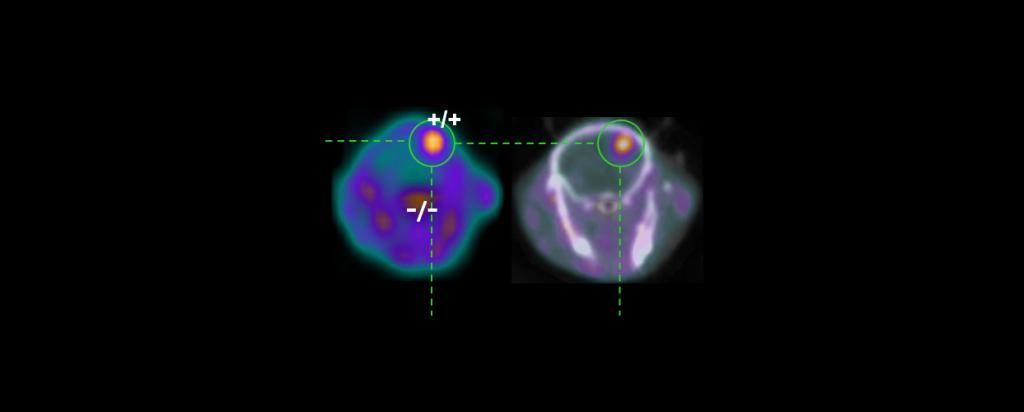
Positron Emission Tomography (PET) and Single Photon Emission Computed Tomography (SPECT) imaging techniques help to discern biological processes at the cellular and molecular levels within an individual over time.
PET and SPECT imaging can provide novel insights on fundamental biological principles, disease processes, and monitoring the effects of new therapies by imaging radioisotope distribution within a specimen.
ANSTO Biosciences operates multimodality preclinical imaging systems designed for small animal (rat or mouse) applications: PET/CT systems and a SPECT/CT system. Each of these can be applied on their own or in combination with the other modalities, the most common being PET/CT, SPECT/CT, CT, or PET/SPECT/CT.
Capabilities
PET/CT Imaging
Preclinical PET is increasingly used to assess the efficacy of therapeutic interventions and to validate the application of both current and novel radiotracers for translation to humans. It is highly sensitive technique and provides true 4D dynamic imaging (space and time). It offers quantifiable measures of the fundamental biological process.
SPECT/CT Imaging
SPECT/CT is versatile functional imaging technique with great translational potential in biomedical research and drug development.SPECT/CT is able to detect the biological changes in healthy or diseased model longitudinally in same animal cohorts, which eliminates the need for studying large animal groups.
Multimodal PET/SPECT/CT Imaging
The combination of PET/SPECT/CT scanning in the same subject enables the sequential scanning of multiple radiotracers suitable for both modalities. This enables the investigation of multiple physiological and molecular functions within a single subject at a single (or very close) time point and under identical conditions and coregistered in exactly the same orientation.
Structural Imaging: Micro CT
Micro CT provides structural information on the subject based on density variations in the subject. This is primarily used for scatter and attenuation correction of SPECT and PET data; however, the CT image also helps to generate more accurate regions of interest.
Image Processing and Quantification
The ANSTO Biosciences has expertise in advanced image reconstruction methods optimized for dynamic PET. Capabilities include expertise in the simulation of dynamic PET studies, conducted on a Monte-Carlo simulation platform developed in-house, with highly realistic and experimentally validated models of PET scanners, including the Ecat Exact HR+ human scanner, the R4 and P4 preclinical scanners and for ANSTO Biosciences’ preclinical PET scanners.
Please discuss your requirements with an ANSTO contact before submitting a proposal

